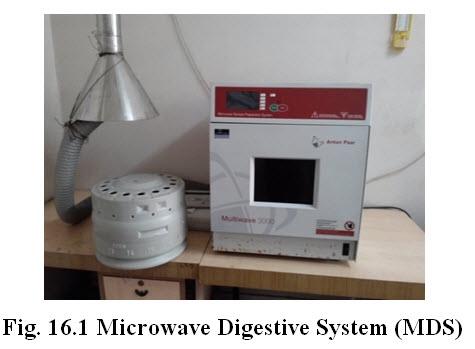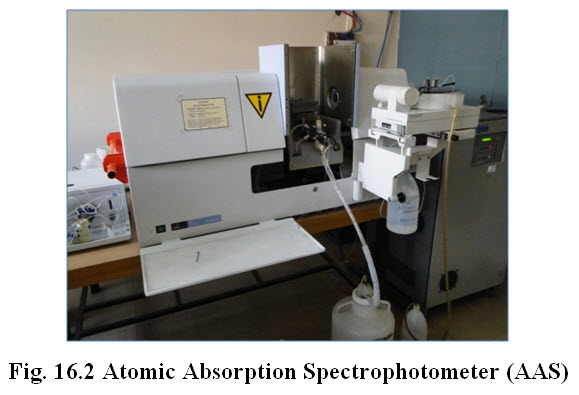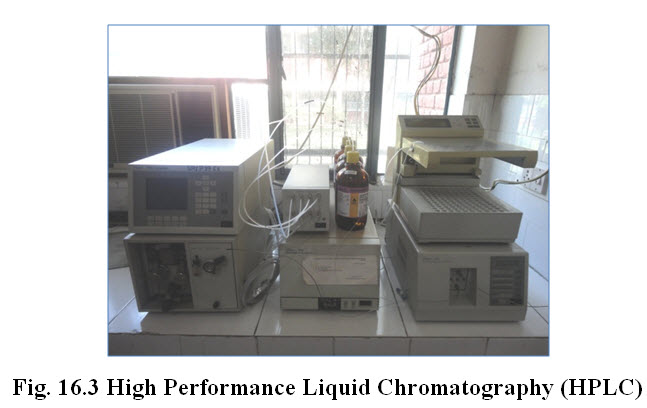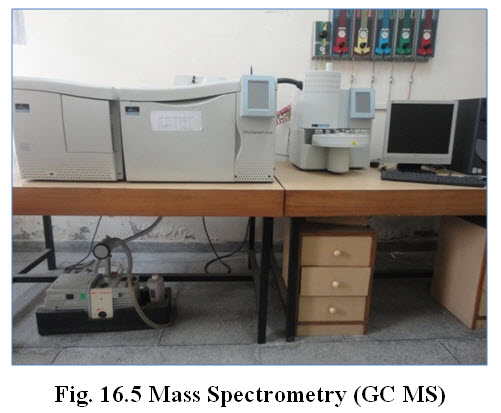Site pages
Current course
Participants
General
Module 1. Introduction to by-products and waste ge...
Module 2. Waste management concepts
Module 3. Direct combustion of solid waste
Module 4. Thermo-chemical conversion of solid waste
Module 5. Bio-chemical conversion of solid waste
Module 6. Solid waste management
Module 7. Effluent treatment and disposal
Module 8. Presence of typical chemicals
19 April - 25 April
26 April - 2 May
Lesson 16.
The use of pesticides has become indispensable in present agriculture to control pests on fruits and vegetables. The farmers frequently use pesticides to save their crops and earn more profit. Though the pesticides are useful to control pests yet they have their own drawbacks. They leave harmful residues on the edible portion of fruits and vegetables. Pesticide residue means any substance resulting from the use of pesticide which may include conversion products, reaction products, metabolites or impurities of toxicological significance. These may be present in fresh or processed fruit and vegetable, or food and drink made from the crop. Residues may result from direct use of pesticides on food crops or environmental or other indirect sources. The animal products like milk and meat and their products may contain pesticide residues if the animals are fed on feed or fodder contaminated with the residues. Persistence of insecticide residues on a particular crop/environment depends on a number of factors and the important ones are:
- Chemical nature of the insecticide
- Amount (dose) applied
- Crop/variety
- Interval between application and harvest
- Weather conditions
- Frequency of application
- Formulation of pesticide
- Application equipment/operator
Management of pesticide residues
In order to minimize risk from exposure of pesticide residue, farmers must observe waiting period before harvesting vegetable or fruit and the waiting period for different insecticide on different crops will vary. It may also vary for one insecticide on a particular crop at two different places. In some cases, the insecticide is applied at the time of sowing/planting and the residues are estimated at the time of harvest due to persistent nature of such insecticides. In such cases these waiting periods are taken as days at harvest and may appear to be very long intervals.
Guidelines for farmers
Farmers should use pesticides only when absolutely necessary. Whenever possible, prefer non-chemical methods of pest control. Apply only recommended pesticides at recommended dosages. Use low persistent pesticide. Do not apply persistent pesticide on vegetable, fruit, fodder crops or directly on animals for control of ticks. Ripe fruits and vegetables should be plucked before pesticide application. After pesticide use, harvest crop only after recommended waiting period. The Punjab Agricultural University has worked out waiting periods for commonly used pesticides on commercially grown fruits and vegetables which are given in the following table:
Waiting period (days) of insecticides on different vegetable crops and fruits
|
Sr. No |
Insecticide |
Waiting period (days) |
Crop(s) |
|
1. |
Endosulfan |
1 |
Brinjal, okra, tomato |
|
|
|
2 |
Grapes |
|
|
|
3 |
Cauliflower |
|
2. |
Carbaryl |
1 |
Tomato |
|
|
|
3 |
Cabbage, okra |
|
|
|
10 |
Cauliflower |
|
|
|
15 |
Grapes |
|
3. |
Malathion |
1 |
Brinjal, cabbage, okra |
|
|
|
7 |
Grapes |
|
4. |
Monocrotophos |
1 |
Brinjal |
|
5. |
Quinalphos |
3 |
Brinjal |
|
|
|
4 |
Tomato |
|
|
|
5 |
Cabbage, Cauliflower |
|
6. |
Triazophos |
7 |
Cauliflower |
|
7. |
Diazinon |
4 |
Cabbage |
|
8. |
Cypermethrin |
1 |
Okra, Brinjal, cabbage, cauliflower, tomato |
|
9. |
Fenvalerate |
1 |
Brinjal, cabbage, cauliflower, tomato |
|
|
|
3 |
Okra |
|
10 |
Dimethoate |
1 |
Guava, peach |
|
11 |
Carbofuran |
6 |
Peach |
|
12 |
Mancozeb |
5 |
Tomato |
|
13 |
Synthetic pyrethroids |
1-2 |
Tomato, cabbage, cauliflower, Brinjal and okra |
Guidelines for consumers
Residues are left behind in the crop after harvesting or storage and make their way into the food chain. They can remain even when pesticides are applied in the right amount and at the right time. The consumer must be made aware of the harmful effects of pesticides. The following steps, if followed, will limit the amount of pesticide residues we eat.
Pesticide residues on food commodities especially fruits and vegetables can be reduced by washing under tap water. Washing with dilute salt solution is convenient method to lower the load of contaminants from food surfaces e.g. in case of green chillies, where dipping in 2 per cent salt solution for 10 minutes followed by washing removes cypermethrin, triazophos and acephate residues. Washing potatoes with tap water or aqueous solution of acetic acid or sodium chloride removes residues. Washing of okra, tomato, brinjal and beans removes malathion, carbaryl and endosulfan residues. Chlorinated (500 ppm) and ozonated (25 ppm) water causes reduction of 50 – 100% of residues in apple. Washing with 0.1% liquid detergent removes 70 % residues of dieldrin and heptachlor epoxide. Alternately blanching of vegetables in boiling water for one minute reduces residues. Combining both washing and blanching can reduce the pesticide residues to greater extent.
Peeling is the most effective method to remove residues from vegetables. Outer portions of celery, lettuce, cabbage and other leafy vegetables may contain the bulk of pesticide residues. Remove the outer leaves of leafy vegetables such as lettuce and cabbage to get rid of pesticides. Residues of some pesticides concentrate in animal fat. Trim the fat from meat, and fat and skin from poultry and fish for removal of pesticides. Peeling and washing help to remove residues of certain insecticides which are not systemic and found only in the pericarp of fruits. Processing, including cooking, reduces the level of pesticides as this breaks down the pesticides. Eat a wide variety of fruits and vegetables, not limiting to only one. This would limit the exposure to any one type of pesticide. Avoid offseason vegetables, because farmers use sprays to earn more profit, as the cost of offseason vegetables is high in the market. Vegetables and fruits should not be grown near open drains and irrigating fields/orchards with sewerage water should be avoided. Proper storage and handling of produce also reduces the presence of mycotoxins.
The pesticides should be used judiciously and to achieve, the cooperation of farmers and consumers is required to reduce the pesticide load and residue problems.
Equipments used for estimation of pesticide residue
Microwave Digestive System (MDS
It is an instrument used for the preparation of sample for atomic absorption system analysis. The digestion process lasts for 45 minutes. For this process super pure nitric acid is being used. After every three digestions, the system needs to be cleaned by a recommended method as the samples for AAS needs to be clarified. For water sample, first its acidification is required.

Atomic Absorption Spectrophotometer (AAS)
It is a spectro-analytical procedure for quantitative determination of chemical elements employing the absorption of optical radiation (light) by free atoms in the gaseous state. The apparatus/system comprised of three modules namely Furnace, Fias and Flame. The detection in the furnace and fias mode is upto ppb level while for flame, its in PPM level. Two types of lamps are used in them (1) EDL (2) HCL. Principle requires standards with known analyte content to establish the relation between the measured absorbance and the analyte concentration and relies therefore on the Beer-Lambert Law.

High Performance Liquid Chromatography (HPLC)
It is a chromatographic technique used to separate a mixture of compounds in analytical chemistry and biochemistry with the purpose of identifying, quantifying or purifying the individual components of the mixture. HPLC is considered on instrumental technique of analytical chemistry. It has many uses including medical (eg-detecting performance enhancement drugs in wine), research (eg. Separating the components of a complex biological sample or of similar synthetic chemicals from each other) & manufacturing (during the production process of pharmaceutical & biological products).

Gas Chromatography (GC)
Gas chromatography is a technique used to separate drugs / pesticides that might be present in a sample. The sample is injected into a long tubular column. The drugs are swept through the column by a stream of helium gas. A samples individual chemical characteristics determines how long it will take to go through the chromatography column. The time it takes for any given sample to travel the length of the column is refreshed to as its Retention Time (RT). It forms an identifying characteristic.

Mass Spectrometry (GC MS)
The detector for the GC is the Mass Spectrometry detector. As a samples exits the end of the GC column it is fragmented by ionization and fragments are sorted by mass to form a fragmentation pattern like the Retention Time (RT), the fragmentation pattern for a given sample is unique and is an identifying characteristic of the sample.

List of instruments/ equipments for pesticide estimation in foods
Sr. No. |
Name of Instruments |
Model / Make |
Function/ Analysis |
|
1. |
HPLC |
M – 600 E/ Waters |
Pesticides (Non volatile) |
|
2. |
Gas Chromatograph |
GC – 17 AATF Ver. 3/ Shimadzu |
Pesticides (Volatile) |
|
3. |
GC-MS |
Perkin Elmer |
Food analysis |
|
4. |
Atomic Absorption Spectrophotometer |
AANALYST – 800/ Perkin Elmer |
Elements (heavy metals, micronutrients in water and food samples) |
|
5. |
Micro wave Digestion System |
Multiwave 3000/ Perkin Elmer |
Sample preparation for AAS |
|
6. |
Millipore HPLC Grade water Generator |
Millipore |
Deionized water |
|
7. |
Tissue Homogenizer |
Swastika Electric & Scientific Works |
Sample preparation for pesticide residue analysis |
|
General Quality Analysis equipments as well as used for pesticide residue and heavy metal analysis |
|||
|
1. |
Colour Difference Meter |
Mini Scan XE Plus/ Hunter Lab |
Colour |
|
2. |
Digital Balances 2 Nos. (4 decimal point) |
Mettler Toledo |
Weighing |
|
3. |
UV-VIS Spectrophotometer |
S – 200 (Specord-200)/ Analytica Jiva |
General Quality Analysis and Pesticide Residue Analysis |
|
4. |
Moisture Analyzer |
HR 73/ Mettler Toledo |
Moisture |
|
5. |
Vacuum oven with multifunctional microprocessor |
VD 115/ Binder |
Preparation of samples in general quality analysis |
|
6. |
Water Distillation Set |
Mono Dust 3000 E/ Germany |
Distilled water |
|
7. |
Refrigerated Centrifuge |
3 K 30/ Sigma |
Centrifuging |
|
8. |
Micropipettes 5 Nos. |
Brand Germany |
Sample measurement |
|
9. |
Hand Refractrometer 4 Nos. |
ERMA Japan |
TSS |
|
10. |
Digital pH meter Bench top 2 Nos. |
MP 230 K (Mettler Toledo) |
pH measurement |
|
11. |
Digital pH meter Portable 2 Nos. |
120 (Mettler Toledo) |
pH measurement |
|
12. |
Digital Balance cap. 42/210 g. (5 decimal point) |
GR 202/ A & D |
Weighing |
|
13. |
Hot plate with magnetic stirrer |
SPINOT/ Tarson |
Sample preparation |
|
14. |
Hot Air Oven |
Universal, India |
Moisture |
|
15. |
Refrigerators 4 Nos. |
GR 322 SVF/ LG |
Sample/ chemical storage |